In the first qualifying round for the UEFA Champions League Suduva welcomed Red Star Belgrade in the first leg of the two-fixtured duel. Two teams have met in the second round of the competition in the last year’s campaign, so the Tuesday night’s duel was a chance for the Lithuanians to get their payback for the aggregate loss of 5-0 they suffered last time they faced same opponents.
Serbian champions were once again the favourites, but they didn’t find the way to score and the decision time will take place at their own turf in a week. This tactical analysis will show you how the Red and Whites controlled the situation on the pitch but didn’t manage to win the match due to their bad decisions and movements.
Lineups
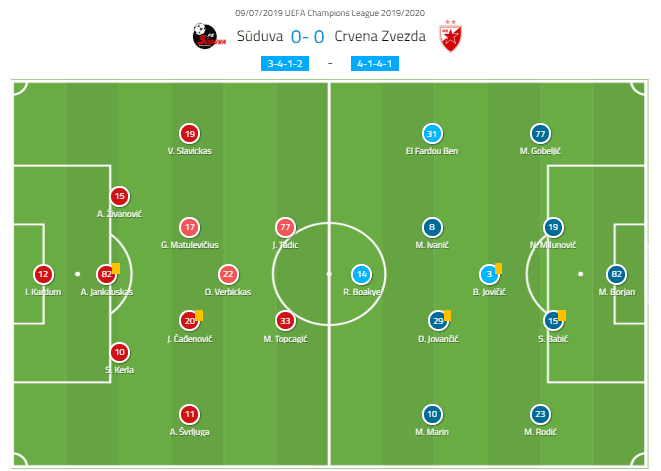
Suduva started the game in the 5-3-2 formation that went through transformation into 3-4-1-2 when they were in possession. They were mostly focused on defending their goal and trying to keep up the clean sheet for the second leg in Belgrade, and Semir Kerla, Algis Jankauskas and Aleksandar Živanović were the keys for securing it. On top of the lineup, there were Mihret Topčagić and Josip Tadić, who had support from Ovidijus Verbickas, and were the main attacking force of the team.
Vladan Milojević set his team in the 4-1-4-1 formation which wasn’t that strict since his tactics rely on the fact that forwards have great freedom in motion so they change positions regularly throughout the game. The main threat for Suduva was the attacking trio made of the star player Marko Marin, Ben Nabouhane and Richmond Boakye, and the lines were held by Dušan Jovančić and Branko Jovičić with Mirko Ivanić as a player with a creative and position liberty.
Red Star’s offensive movements
The Serbians went into the match with the clear burden of favourites so they were in control of the game right from the first minute. Since they have great attacking potential, they managed to win the half-space battle at first, but as the game proceeded the home team got tighter and harder to beat.
Ben and Marin were the keys for doing this and they were the ones who brought the team into good situations in the final third. Even though they were lined up as wingers, both of them mostly searched for the gaps between the opposing team’s lines in the half-spaces and in the central-corridor.
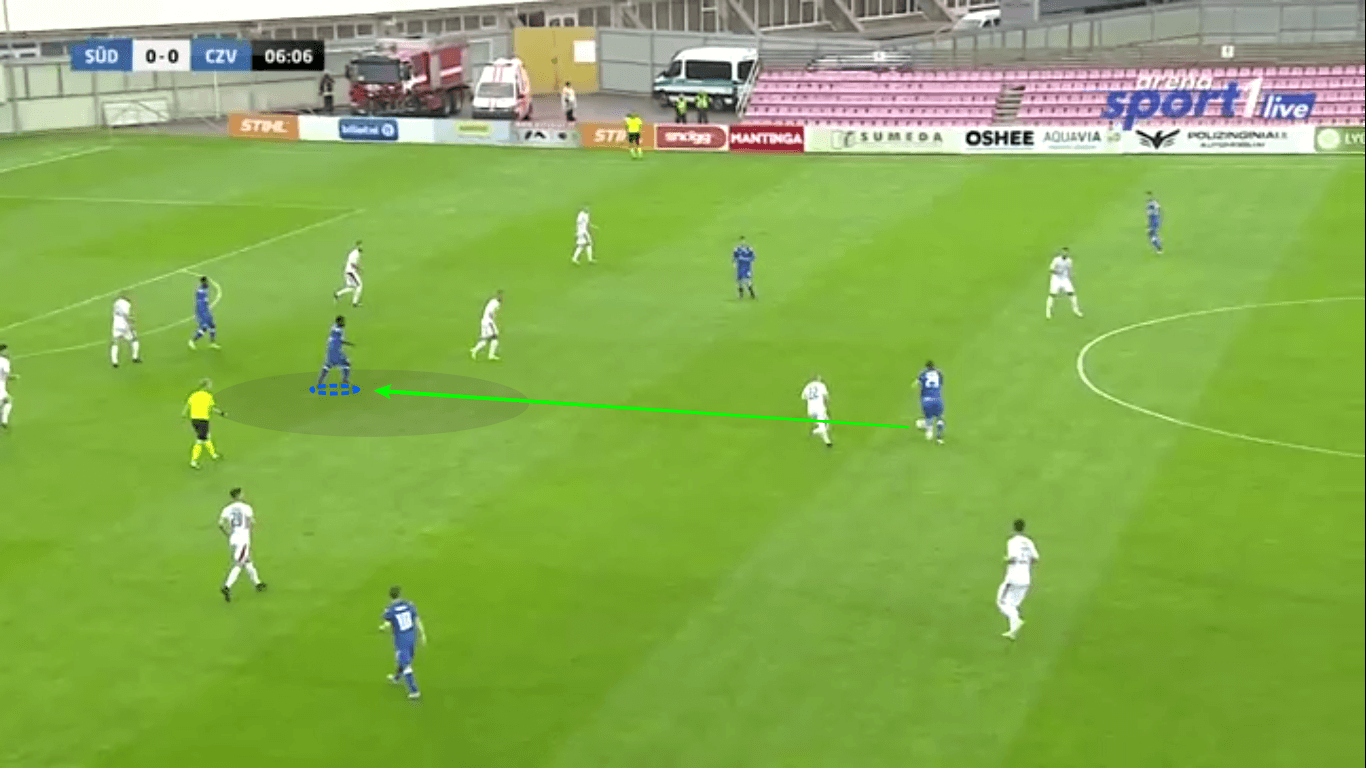
In the picture, we can see the Comorian is positioned at the edge of the box down the central route of the field and gets the ball in the zone from which he could endanger the opposition’s goal. The “wingers” had good communication with Boakye, who was the lonely striker and got into the spaces that he emptied for them by locking the centre-backs.
As the match went on, Suduva worked on tightening the lines and cut the pass forward options for their opponents. Although Red Star players kept moving, they weren’t moving good enough and that stopped them of getting into the chances.
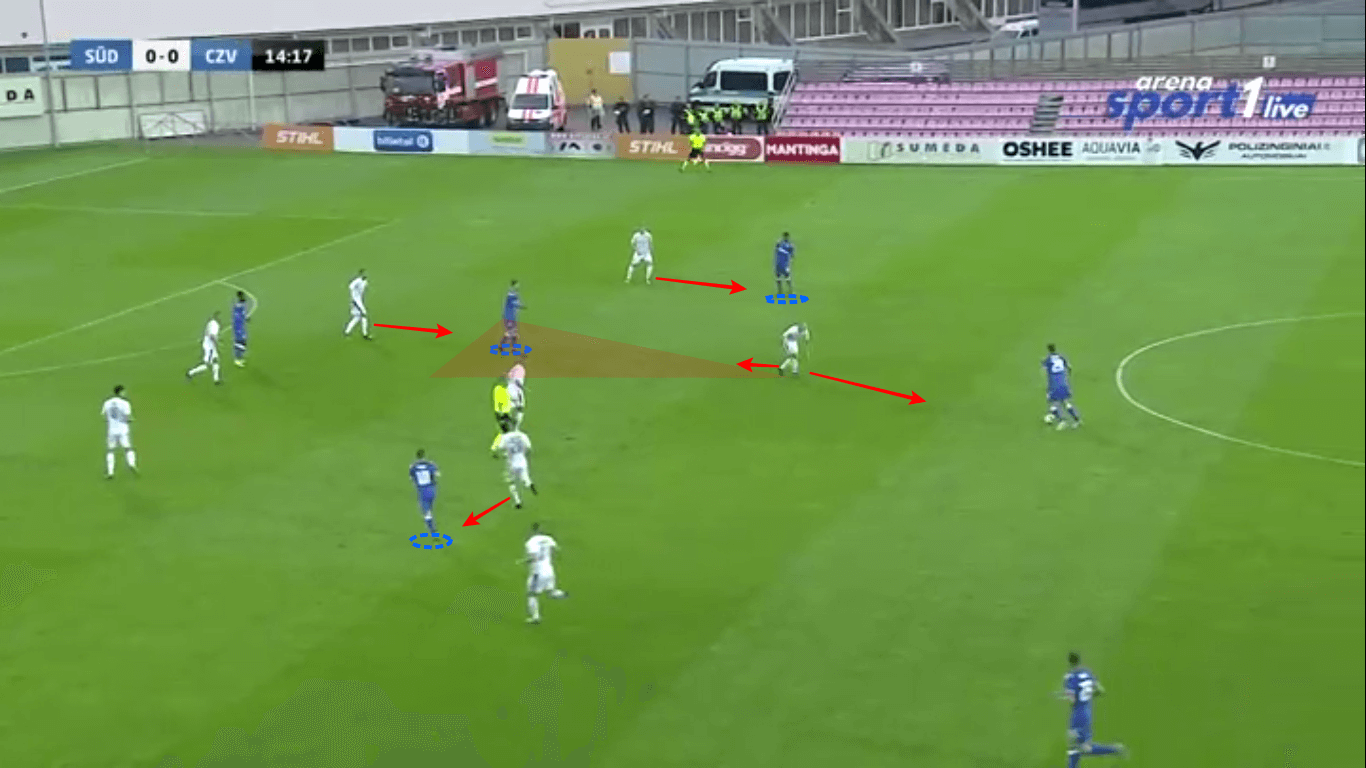
The away team’s offensive players continued with searching for the rooms within the Lithuanians’ defensive structure but weren’t moving very well so they weren’t that hard to guard.
Even though their motions were expected and easily read by Vladimir Cherubin’s team, they did get to a few chances when the opponents have lost the concentration and were off-balance. Marin went on and on with roaming through the lines and got the ball in good positions, but the final touch was missing.
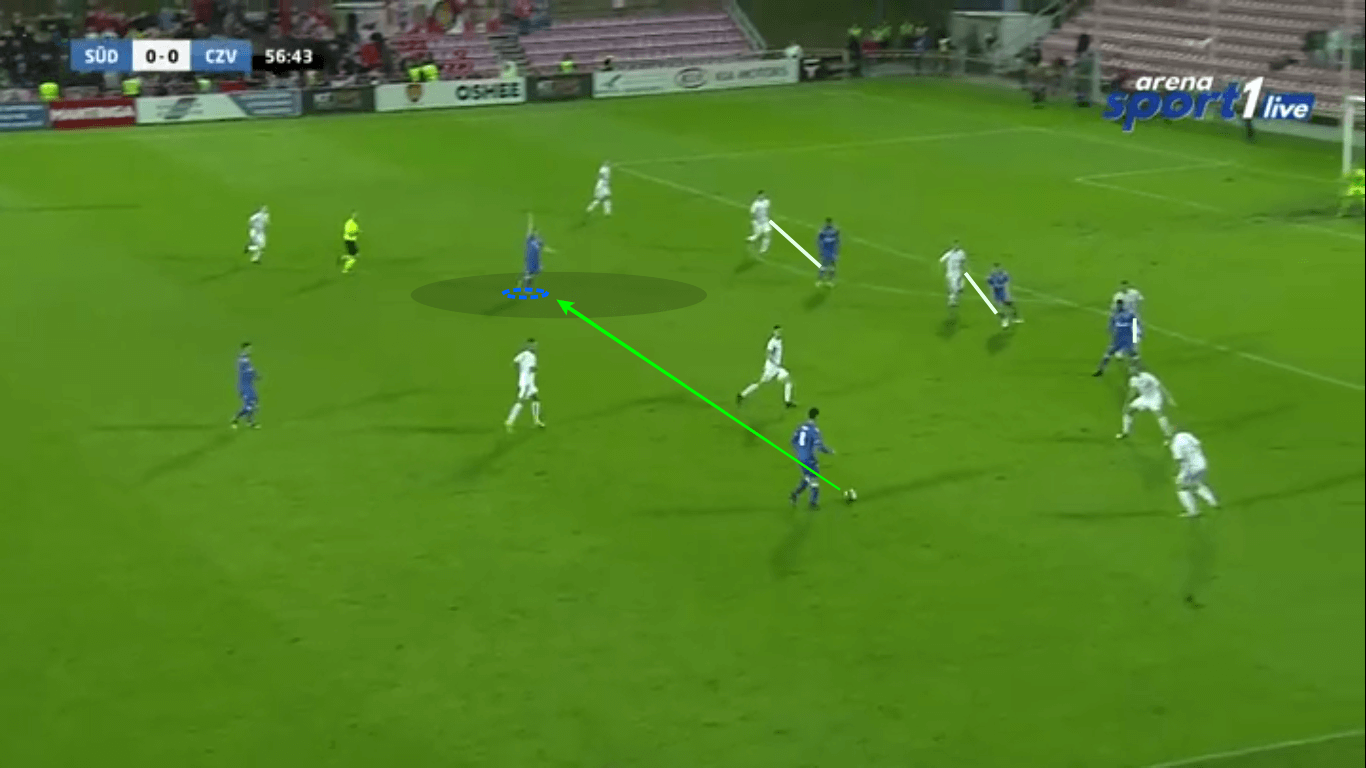
Milojević team wasn’t as unpredictive as they should be regarding the offensive potential they have in their squad, but they got to better opportunities than their opponent besides the fact their play wasn’t flawless.
The away team’s run-ins and space creations
Red Star tried to control the situation on the pitch and to be dangerous from the unexpected positions but they struggled with finding the net. They got into some good situations but the matter of the last pass or shot was the problem for them through the whole game.
One of the main ways with which they tried to endanger the opponents were the run-ins from the second line that were performed by the wingers and by the midfielders. Ivanić had a lot of great runs but didn’t make as good decisions when he got balls when those scenarios came to happen.
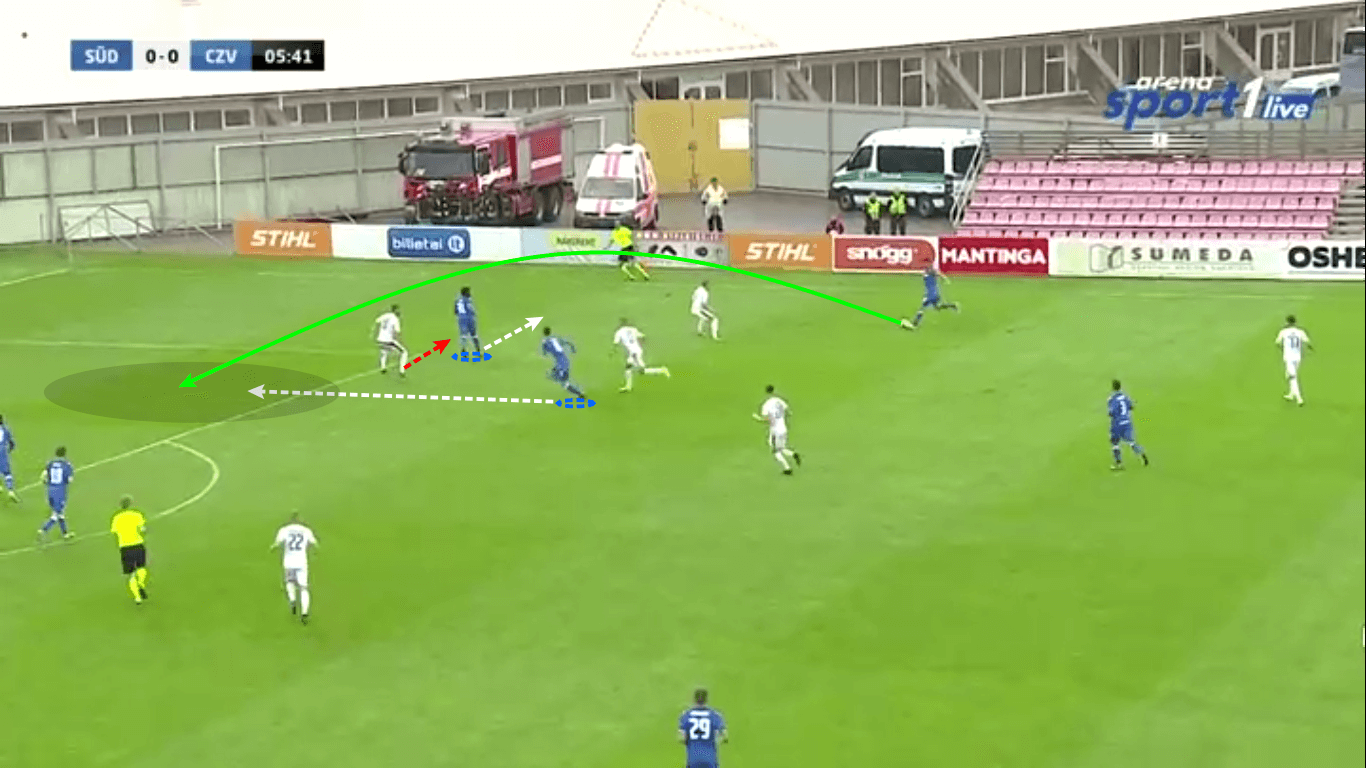
As we can see, the Montenegrin used the space that Ben on one side, or Marin on the other, emptied for him to fill it. His run-ins confused Suduva’s defence in a lot of situations, he got passes very often but wasn’t that successful in creating chances and attempting shots.
Ben and Marin did the same thing but from the higher positions on the pitch. They tended to cut inside as much as they tried to pull themselves out to the flanks in order to get the ball in the best possible position.
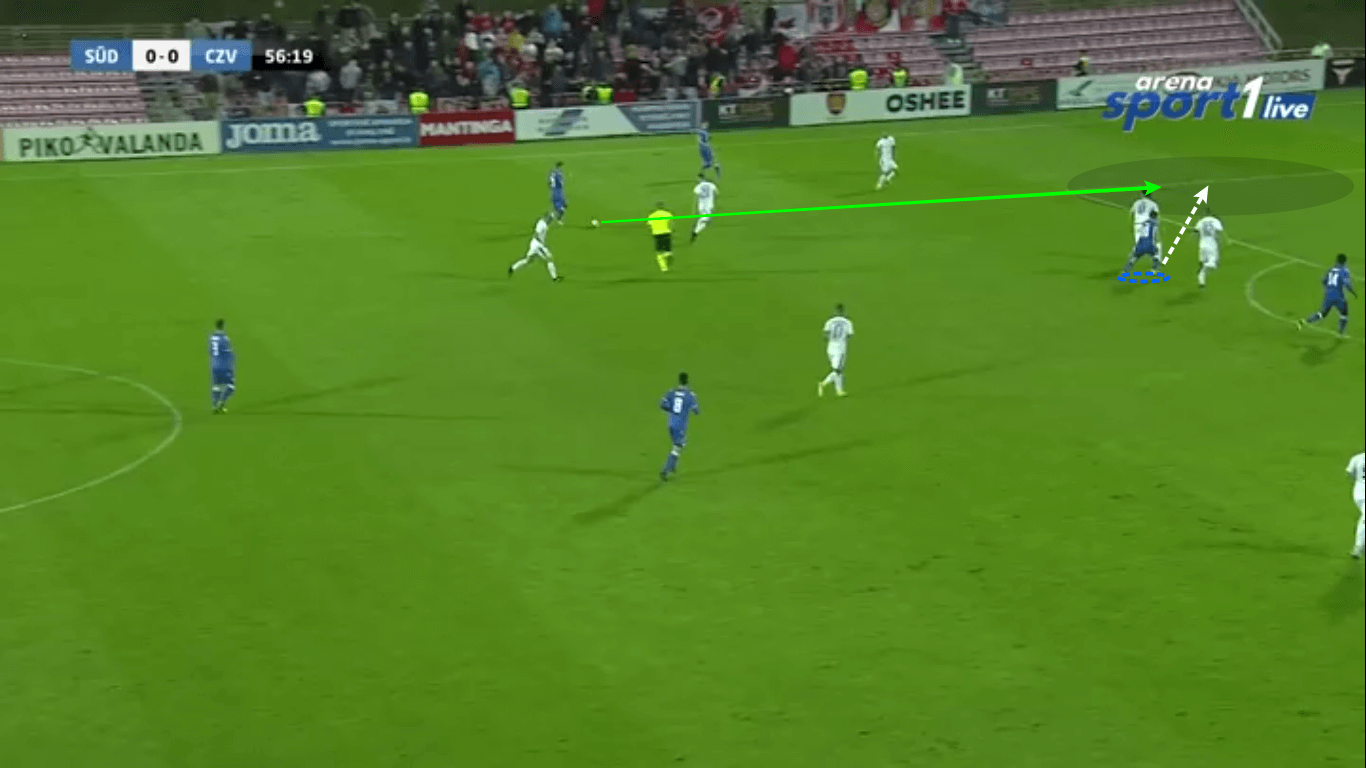
Their runs were on shorter distance and they wanted to exploit the spaces that were left free between the centre-backs and the full-backs. From there they usually sought for their team-mates with crosses and return-passes, but without much luck with the endangering the goal.
Also, those movements were often the fake-motions that were performed in order to confuse the defending team and to provide their players with the empty room on the flanks. The Comorian attacker often went inside so the right-back on his side could get the open lane in which he can get the pass, and from where he could send the cross into the box, and the German did the same on the left-handed side.
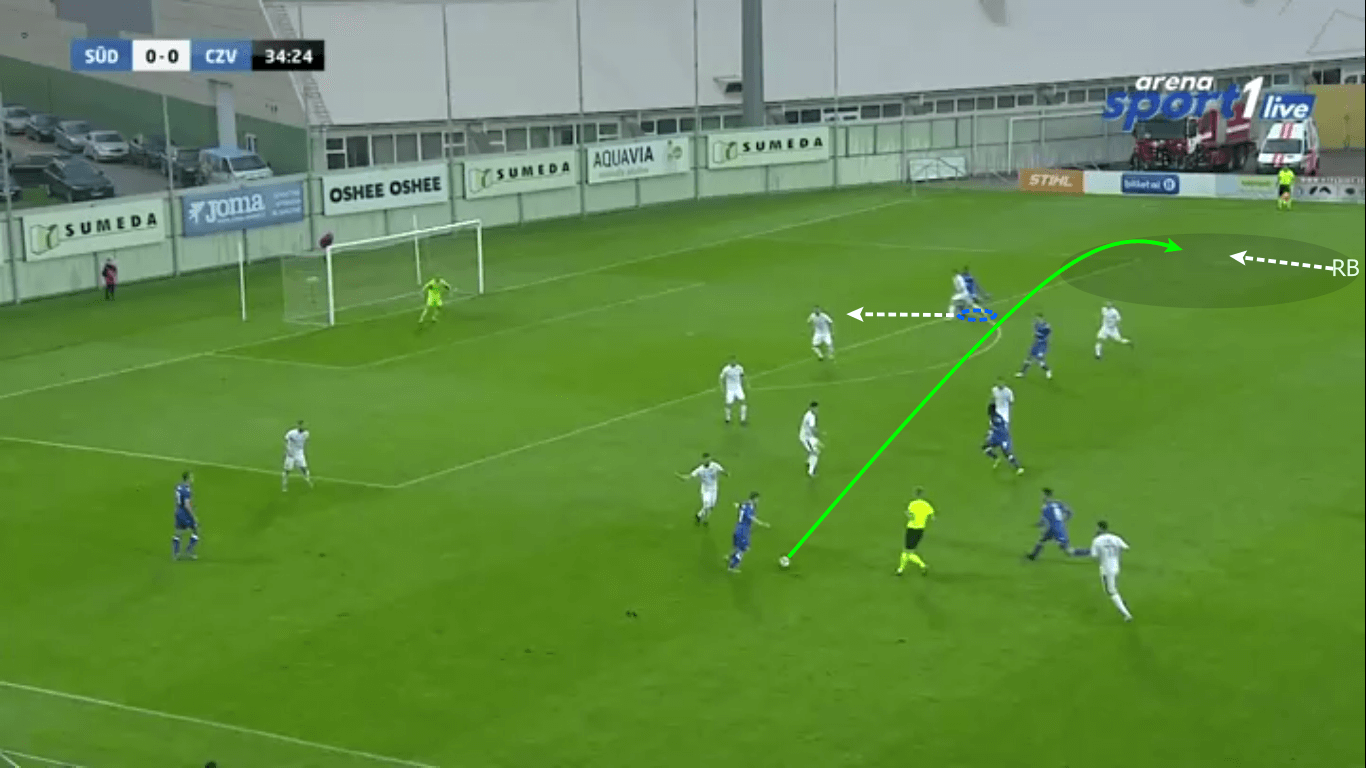
Red Star’s midfielder’s vision and sense for the game were crucial in these situations and they served Marko Gobeljić and Miloš Rodić, who were the full-backs, with a lot of good passes, but their balls to their strikers weren’t good enough to threaten the opposition.
Breaking the lines with deep passes
Since Milojević set his tactics to make his team in control of the game it was clear that they were the ones that are closer to the win. But, they didn’t manage to find it due to their own lack of creativity in the opponent’s half and bad decisions in the final third.
In the second half, they tried to change their approach – to skip the midfield and try with the long balls to their striker and wingers. They succeeded in breaking the opposition’s lines with those deep passes but weren’t concrete as they needed to be when it came to chance creation and realisation.
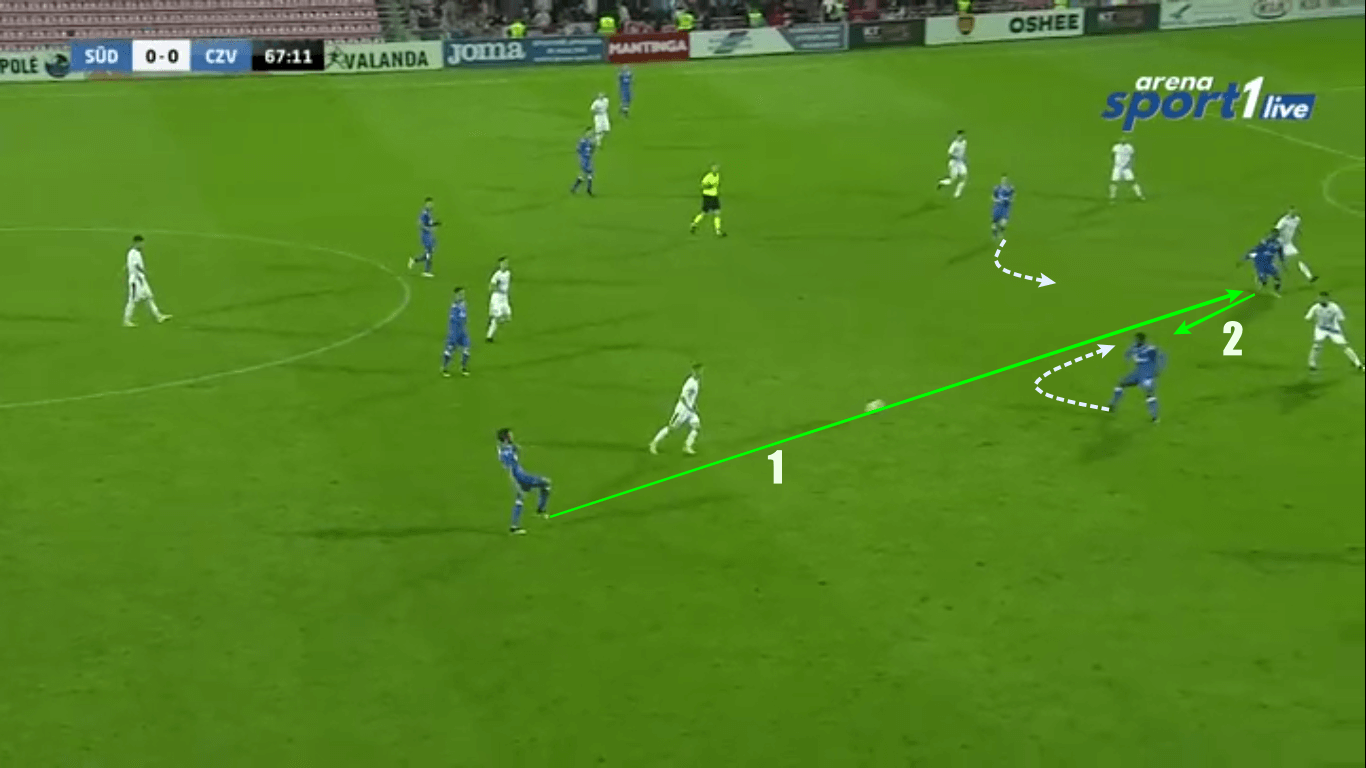
In the image overhead, we see Red Star’s centre-back sending the ball to Boakye who is positioned well and get it in the zone from which his team could get into an opportunity. He had the support of their main attacking players – Marin and Ben – but after the return-pass to one of them, they usually didn’t find the way to beat the defence.
Those situations also happened with the long balls through the air, the single striker was the main target and he pulled himself lower and tended to position in the half-spaces where the passes were mostly directed.
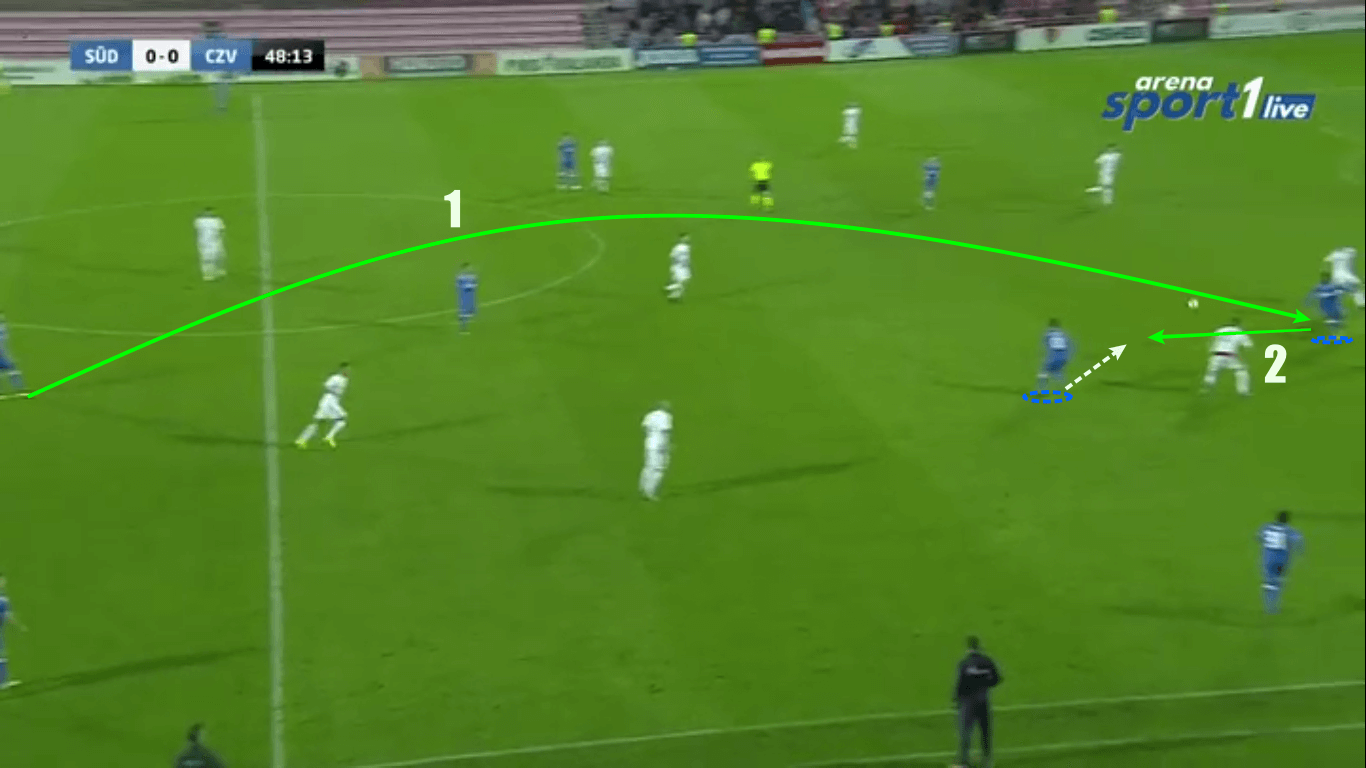
Nemanja Milunović played a huge role in providing good long passes to his attackers and was one of the main creative forces for Crvena Zvezda in the second 45 minutes. Wingers continued with their support to the Ghanian but the lack of decisiveness kept the away team from winning in this match.
Conclusion
Our analysis shows that even though the Serbian champions were the team that was in control of the situation on the pitch, they didn’t get to highly-wanted win due to their own shortage of creativity in the decisive parts of the field. They were clearly the better side but weren’t dominating their opponents it was expected in beforehand.
Red Star will have another chance to show the footballing public that they were deservedly called the favourites in this two-legged fixture, and Suduva has secured the good result before their trip to Belgrade where they could make a huge surprise and kick Crvena Zvezda out of the competition.
If the last year’s Champions League group stage participants want to pass through the next stage, it is clear that Milojević needs to set his players straight for the second leg and make them play the way they used to throughout the last season.
If you love tactical analysis, then you’ll love the digital magazines from totalfootballanalysis.com – a guaranteed 100+ pages of pure tactical analysis covering topics from the Premier League, Serie A, La Liga, Bundesliga and many, many more. Buy your copy of the June issue for just ₤4.99 here, or even better sign up for a ₤50 annual membership (12 monthly issues plus the annual review) right here.

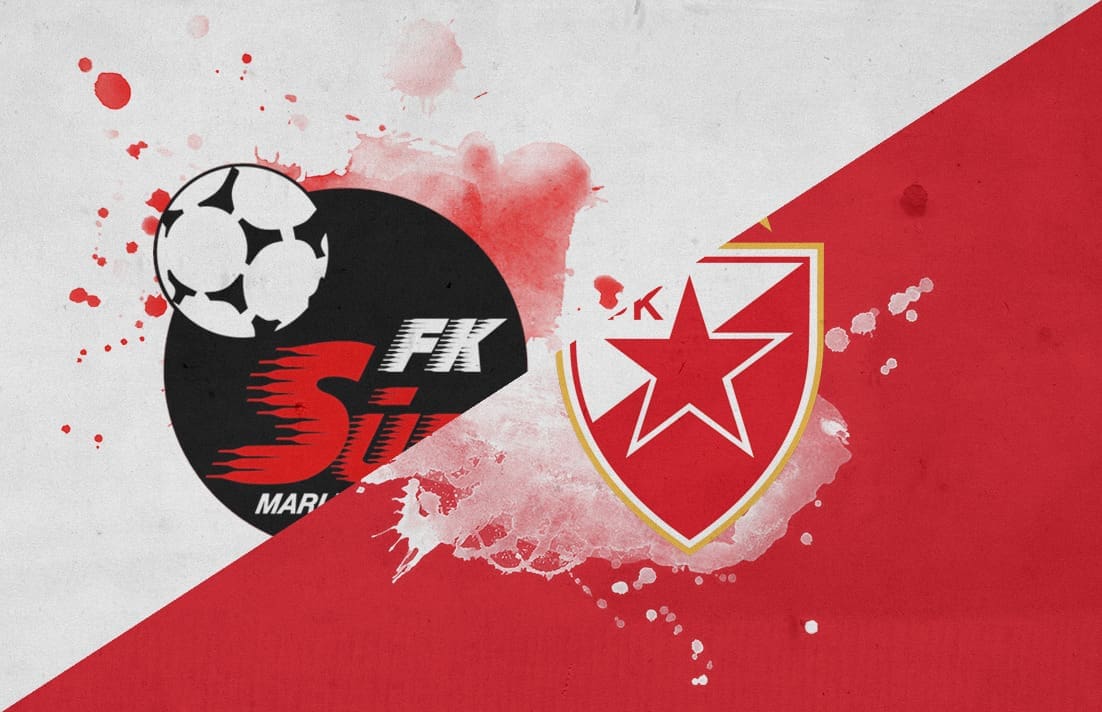



Comments